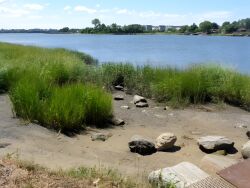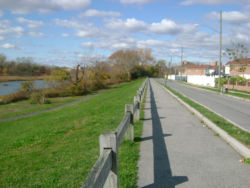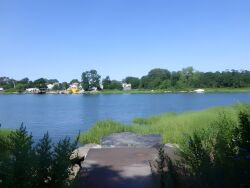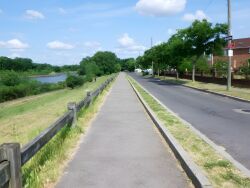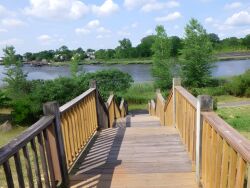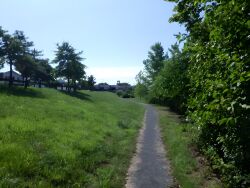Castle Hill Park
Castle Hill Park
Castle Hill Park lies at the tip of Castle Hill Neck, a peninsula named by English settlers for a fortified Indian village located on a hill overlooking the East River. This village, inhabited by Siwanoy Indians, was known as Snakapins and was first discovered by the explorer Adriaen Block during his expedition to North America in the early 1600s. Located between Westchester Creek to the east and Pugsley Creek to west, Castle Hill Neck was first settled in 1685 by John Cromwell, a cousin of Lord Protector Oliver Cromwell. John Cromwell’s father, Colonel John Cromwell, served in the Puritan forces during the English Civil War. However, Colonel Cromwell disagreed with Oliver Cromwell over the execution of King Charles I. Serving as an emissary of Prince William of Orange, the ruler of the Netherlands, Colonel Cromwell delivered a plea to Oliver Cromwell for the king’s life. When Oliver Cromwell rejected the plea, Colonel John Cromwell fled to the Netherlands. His son, John Cromwell, eventually settled along with other Puritans in what is now the Bronx.
The South Bronx, called Vredelandt (free land) by the Dutch authorities, was open to settlers of all nationalities and religions. Shortly after their arrival in Vredelandt, the English settlers established the town of Westchester, centered along Westchester Creek near what is now Westchester Square. Chester, an archaic English term, originally referred to a small military encampment. The town of Westchester, which included Castle Hill Neck, was so named because it represented the westernmost extent of English settlement on the American continent at the time.
Castle Hill Neck was owned by the Cromwell family until the late 1700s, during which time the area was known as Cromwell’s Neck. In 1800, the land passed to Rev. Isaac Wilkins, the minister of St. Peter’s Church on Westchester Avenue, and remained in his family for several generations. Although the area was briefly called Wilkins Neck, the peninsula re-acquired its original name, Castle Hill Neck, when Gouvernor Morris Wilkins established a manicured estate known as Castle Hill on the site. After the dissolution of the Wilkins estate, Castle Hill Neck consisted primarily of small houses and truck farms. In the 1950s, many of these smaller properties were replaced with large public housing projects.
The tip of Castle Hill Neck was acquired by the City of New York through condemnation in 1907. This parcel was enlarged in 1914 when the bulkhead line along the East River was extended. In 1929, the Board of Alderman named the land Castle Hill Park, and it was officially transferred to Parks on September 23, 1931. At this time, land surrendered by the Bronx Borough President was added to the park, along with underwater property ceded by the Department of Docks. Castle Hill Park has remained undeveloped since its acquisition. Nevertheless, the park’s rich history and scenic location make it a valuable property.
Check out your park's Vital Signs
Clean & Safe
Green & Resilient
Empowered & Engaged Users
Share your feedback or learn more about how this park is part of a
Vital Park System

